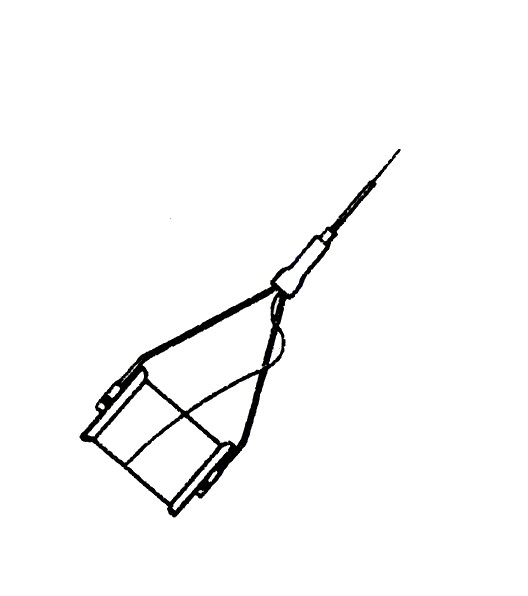
On The Fly
"Fly tying is a school from which we never graduate"
TYING NEWS
The Southern Oregon Fly Tiers met Wednesday, December 13th
at the library in Gold Hill. There was a fly raffle and tying demonstrations
by several talented members. We encourage novice and experienced tiers alike
to drop by for a fun evening. A lot of valuable knowledge will be exchanged
and there is no fee. Next meeting is January 10th when will continue the
popular fly exchange. We also plan to hold our first annual tying swap. Buy,
sell or trade excess materials, tools, or books. So join us the second
Wednesday of each month for more fun and the sharing of the art.
RFF will be offering fly tying classes again this year. We
will be adding an advanced class on streamers, along with the beginner- and
intermediate-level classes. Classes will begin on Monday, January 22nd and
run for six consecutive weeks. There will be no fees and all materials will
be provided. A few spots still remain but class sizes are limited to twelve
each so sign up early at the next meeting.
 PATTERN OF THE MONTH - The Spruce
PATTERN OF THE MONTH - The Spruce
Hook: Streamer, 3X or 4X long, size 10 to 1/0.
Thread: Black 6/0.
Tail: Peacock sword, 3-5 depending on hook size.
Body: Rear 1/3 of red floss; front 2/3 of peacock herl.
Wing: Badger hackle feathers.
Hackle: Badger, tied wet style.
Tying Instructions:
1) Start the thread two eye-lengths behind the eye. This is the thread base
for the body material and the marker for the hackle tie-in point. Wind a
thread base back to just above the point of the hook.
2) Tie in the peacock sword as the tail. Tail should extend ˝ the shank
length.
3) Tie in the red floss, advance the thread to the 1/3-shank-length
position, then wind the floss forward to the hanging thread. Tie off and
trim the floss.
4) Tie in several strands of peacock herl at this spot.
5) Wrap the herl over the shank and around the thread in a counterclockwise
direction. Wind the reinforced peacock forward the remaining 2/3 shank
length. Tie off and trim.
6) Select two matching badger hackles. Place the feathers’ shiny sides
together so that they will splay out. Measure the length so tips reach past
the end of the tail. Trim away excess fluff and barbs at the front of
hackles. Hold the matching hackles between your thumb and forefinger while
setting them on top of the hook shank. Secure the hackles with several wraps
of thread winding towards the eye.
7) Select a full badger hackle, tie it in at its tip with the barbs curved
back, and then wind it forward forming a full collar. Tie off the hackle,
form a neat head, whip finish and apply head cement.
The Spruce fly was designed around 1918 by brothers Bert
and Milo Godfrey who owned a hardware store in Seaside, Oregon. The first
Spruce fly was reportedly tied by Bert on a #8 sproat fly hook. The pattern
evolved into a streamer when anglers began extending its use to resident
trout and steelhead. Quickly gaining a reputation as a deadly pattern along
the Pacific Coast, the Spruce soon became a favorite throughout the west.
Over the years the Spruce has been tied on standard wet fly hooks, streamer
hooks of all lengths, steelhead irons, and even double hooks used for
half-pounders on the Rogue. The secret to its success seems to be a
combination of classic Royal Coachman colors and the enticing scissor-like
action of the splayed badger hackle wings.
Through the years, tiers have dressed the Spruce to
reflect their individual tying styles without substituting any of the
original materials. You will see different Spruce patterns with different
herl-to-floss ratios, wing tied body length and others tied with hackle tips
extending beyond the tail. Badger necks vary in overall color and center
stripe width, making for a great many alternative looks for the pattern.
Through it all, however, the Spruce remains effective and aesthetically
pleasing. So tie some up, give them a test flight and let me know how you do.
TYING TIPS
Another reminder about peacock herl: The material is
deadly but fragile. Winding it around the thread or adding a fine wire rib
is a must. When you tie in the peacock-sword tail, wrap the thread over the
butts 1/3 up the shank to ensure a smooth floss section. When you tie off
the peacock herl at the front of the body, do not use too many thread wraps
because that results in a bump making the attainment of the proper wing
angle almost impossible. Substitute purple chenille for the front 2/3 body,
add a red hackle fiber tail, and you have tied the Purple Joe, a very good
pattern for sea-run cutthroat and summer steelhead.
Tie One On,
Dan Kellogg (you can contact me at FLYGUY@EZNORTHWEST.COM)